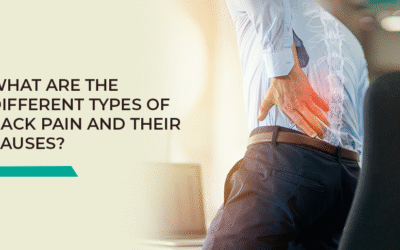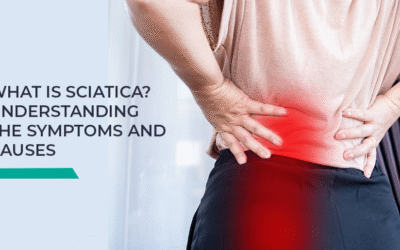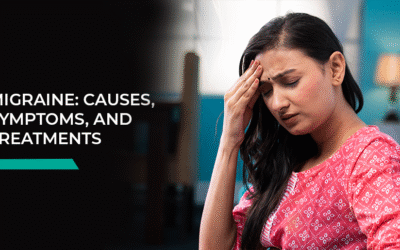9962 413 413
Book Appointment
I finally got relief from my back pain thanks to Epione
Mrs. Aswathi Subramanyan
Back Pain Treatment
Dr Chetana Chetan help me from knee pain due to arthritis
Mrs. Kalavathi
Knee Pain Treatment
My sister suffered from Knee pain for 5 years but finally found pain relief at Epione
Mrs. Savitri
Foot and Ankle Pain Treatment
Low Back Pain Treatment
in Chennai
Over 80% of the population will suffer from back pain during their lifetime.it is one of the most prominent reasons why people visit the doctor or miss work. In approximately 90% of cases, it is temporary and pain improves without surgery. However, 50% of patients who suffer from episodes of low back pain will have recurrent episodes within one year. Lower back pain can be categorised as acute, subacute or chronic. Acute episodes of lower back pain usually last from a few days to 4 weeks and subacute lower back pain lasts between 4 to 12 weeks., About 20 % of acute back pain sufferers go on to develop chronic back pain—defined as pain that lasts 12 weeks or longer.
What are the Causes of Back Pain?
Back pain is usually associated with the following conditions:
strain of a muscle or sprain of the ligament
- Lifting a heavy object with poor body mechanics
- Sudden movements that causes too much stress on the low back, such as a fall, road traffic accidents
- Poor ergonomics for long time
- Sports injuries, especially in sports that involve twisting or large forces of impact
This type of acute pain can be quite severe but do not typically last for longer time & can be managed conservatively.
Normally, Discs are sandwiched between the vertebrae. They act as cushions between them. Each disc has inner soft gelatinous layer covered by a tough outer layer.
Degenerative disc disease: With aging, discs become thinner and flatter due to wear and tear. Water content in the disc reduces, this lessens their ability to cushion the vertebrae and become more susceptible to tear.
Herniated disc: due to aging or overuse, the protective covering on intervertebral discs can tear over time. When this happens, the soft gelatinous inner disc material may herniate through the outer layer. A disc that bulges or slips out of place is known as a herniated disc, bulging disc, or slipped disc. The herniation may cause compression on nerve roots, leading to symptoms like pain (may or may not be radiating), tingling, numbness or weakness in the area innervated by the affected nerve.
Sciatica: The sciatica nerve runs down your lower back through your hips and buttocks and down each leg. Pain occurs when this nerve gets pinched or irritated . Commonly people refer to pain that travels down the leg from the lower back as sciatica, although your doctor may refer it as lumbar radiculopathy.
Spondylolisthesis. A vertebra slides forward out of position, disrupting alignment of the spine and sometimes compressing nerve roots. It can occur anywhere along the spine but more common in the lumbar region.. This slippage is often caused by either disc degeneration or a fractured vertebra(spondylolysis).
Spinal stenosis. A narrowing of the inside spaces of your spine, most often from a herniated disc but sometimes from bone spurs caused by spinal osteoarthritis. This can result in painful pressure on your spinal nerves. Spinal stenosis is more common in the lumbar region, followed by cervical region.
Spinal osteoarthritis (spondylosis): Osteoarthritis can frequently result in lower back aches. Generally, this happens with aging.
Vertebral Osteoporosis: The backbone can develop fractures and cause pain, as osteoporosis makes the bones brittle and porous. Commonly seen in elderly & in menopausal women due to hormonal changes.
Kidney stones can also result in back pain.
What are the Risk Factors of Low Back Pain?
General risk factors of low back pain:
- Age
- obese
- Genetics
- Jobs or activities- eg:
- Sedentary lifestyle
- pregnancy
- Smoking – it affects the delivery of nutrients to important structures in the back, and can also make healing from back injuries or surgery more difficult and less effective.
What are the Symptoms of Back Pain?
It starts as pain in the low back that can radiate down into the glutes (buttocks), hips or legs.
pain can be sharp, stabbing, dull aching type, burning or a combination of all of these.
- Pain can be constant, intermittent or activity-related
- Difficulty moving
- Swelling
- Stiffness
- Inability to stand up straight
- Inability to flex the back
How is Back Pain Diagnosed?
Based on thorough clinical history & clinical examination., your doctor probably would have come to one or two conclusions as to what is causing your back pain and other symptoms. To obtain more information about your back problem, and to help confirm the diagnosis, the doctor may request one or more of the following tests:
- X-ray to rule out arthritis and fractures.
- CT or MRI scans to detect herniated discs and abnormalities with bones, muscles, tendons, nerves, ligaments, and blood vessels.
- Blood tests to rule out infection
- Bone scan, performed to measure bone health and risk for breaking bones.
- Electromyography (EMG) & Nerve Conduction Studies (NCS) are adviced when a particular muscle or nerve is the culprit of pain.
- Diagnostic injections: Generally , spinal injections are given to control the pain , but they can also be given to aid in the diagnosis of the pain generator . These include discography , selective nerve root block , facet joint injections , sacroiliac joint injections ..
What is the Treatment for Back Pain?
Back pain is an illness that affects everyone differently. A majority of back pain improves after a month of conservative treatment, while for some, the discomfort lasts a few months to years. Bed rest is not advised. Instead, it is recommended to continue activities to the extent that one is capable. Light exercise, such as regular walking and daily activities, are advised. If conservative measures don’t work after a few weeks, the doctor may prescribe more potent drugs or other treatments that include;
Common medications for back pain include:
- over-the-counter pain medications like NSAIDs (non-steroidal anti-inflammatory drugs)
- Muscle relaxants
- Opioids
- Antineuropathic medications
- Topical rubs and ointments
Physical Therapy:
This includes active and inactive treatments.
Inactive treatments include heat & cold packs, ultrasound massage, TENS etc., These help to improve the circulation by reducing the inflammation, pain & helps to relax the muscle. Active treatments include conventional therapies such as stretching and strengthening movements and exercises. A customised physical therapy helps the back pain sufferers to restore the function & return to their normal work.
Non-surgical Pain Management:
Lumbar epidural injection – Your doctor will insert a small needle into the epidural area and administer a small dose of medication to relieve the pain under fluoroscopic guidance. It is regarded as very effective for the treatment of back pain. This is just similar to the injection given in the back to relieve the labor pain during the delivery.
Transforaminal Epidural Steroid Injection – This procedure is similar to the one above, but instead of injecting the medication directly into the nerve fibres, the drug is focused directly onto the affected nerve fibres, resulting in delivery of more medicine in the affected area.
Spinal cord stimulations – It is a wonderful and effective therapeutic option that can relieve pain without surgery when the inflammation in and around the affected nerves is too high for an epidural injection.
Radiofrequency ablation – In this procedure, the affected nerve is degenerated with the help of heat.
How is the Course of Follow Up?
If back pain resolves with above non-surgical & conservative treatment, follow-up will likely be on as and when needed basis.
When Surgery is Necessary?
Candidates for surgery present any of the following RED FLAGS (warning signs):
- Back pain after injury, such as a fall, road traffic accident
- Sudden worsening or disabling back pain
- progressive neurologic deficits like leg weakness, numbness or both
- buttock and/or genital area numbness and/or tingling
- Back pain accompanied by fever
- loss of normal bowel and bladder functions
- pain not relieved with the conservative treatments
- back pain associated with unexplained weight loss
how Back Pain can be Prevented?
- Maintain a healthy diet and weight.
- Avoid prolonged inactivity or bed rest.
- Maintain proper posture.
- Wear comfortable, low-heeled shoes.
- Sleep on a quality medium firm mattress to minimize any curve in your spine.
- Quit smoking
- Doing proper exercise regularly
- Follow Proper lifting & carrying techniques while handling the heavy objects.
Recent Blogs
What are the different types of back pain and their causes?
Back pain is one of the most common reasons people seek medical help today. Whether it’s a constant dull ache or a sharp jolt that takes you by surprise, it affects people across all age groups. But here’s what many don’t realise; there are different types of back...
What Is Sciatica? Understanding the Symptoms and Causes
Lower back pain that travels down your leg can be more than just a sprain. It could be sciatica. While many people have heard of the condition, very few truly understand it. At Epione Pain Management, we meet several patients every week who come to us after months of...
Migraine: Causes, Symptoms, and Treatments
Migraine is not just a bad headache. It's a medical condition that often affects how people work, study, and live day to day. For many, it’s unpredictable and frustrating, especially when medication alone doesn’t offer lasting relief. At Epione Pain Management, we...
Frequently Asked Questions
What kind of doctor is best for back pain?
A pain specialist or spine expert is ideal for back pain. At Epione, our multidisciplinary team provides the best back pain treatment in Chennai and non-surgical care customised for the root cause of your back pain.
Which treatment is better for back pain?
The best treatment for lower back pain is according to the cause. Epione offers advanced options, including physiotherapy, radiofrequency ablation and regenerative therapies, focusing on long-term relief without surgery.
How do I know if my back pain is serious?
If pain persists beyond two weeks, radiates to legs or affects movement, it’s serious. Consult Epione’s best doctor for lower back pain in Chennai early to avoid long-term complications and receive an expert evaluation.
What types of treatments do lower back pain specialists in Chennai offer?
Epione, an ideal back pain specialist in Chennai, offers physiotherapy, radiofrequency ablation, spinal cord stimulations and posture correction – all focused on relieving pain and restoring mobility without surgery.
How do I choose the right lower back pain specialist in Chennai?
Look for experience, advanced technology, patient reviews and a holistic approach. Epione’s specialists in Chennai offer expert, non-surgical solutions personalised to your unique back pain condition.
What are the benefits of consulting a lower back pain specialist in Chennai?
You receive precise diagnosis, advanced non-invasive treatments and expert care. Epione’s specialists help manage pain effectively, improve quality of life and prevent future spine complications.
Can a back pain doctor help with both acute and chronic back pain?
Yes! At Epione, our pain doctors treat both sudden and long-term back pain using personalised therapies that address inflammation, nerve issues, muscle strain or degenerative conditions.
What is the strongest pain relief for lower back pain?
Radiofrequency ablation and regenerative non-surgical treatments offer strong, lasting relief. Epione’s specialists customise treatment based on severity to minimise pain and improve function effectively.
What are the five red flags of low back pain?
Watch for numbness, weakness in legs, bladder issues, unexplained weight loss and severe night pain. These may signal serious issues; consult immediate assistance from the best hospital for back pain in Chennai – Epione.
Can lower back pain be fixed without surgery?
Absolutely. Most back pain improves with non-surgical treatments like physiotherapy, spinal cord stimulations and advanced therapies. Epione specialises in offering the best treatment for back pain to resolve pain without the risks of surgery.







